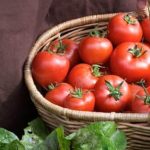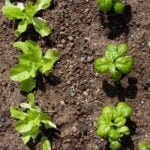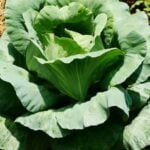Are you thinking about starting a vegetable garden in Arizona? The unique climate of the state presents both benefits and challenges for aspiring gardeners. From extreme heat to low water availability, growing vegetables in Arizona requires careful planning and consideration.
In this article, we will explore the ins and outs of vegetable gardening in Arizona, including the best vegetables to grow, soil preparation, watering techniques, sun and shade considerations, pest management, extending the growing season, and local resources for support. Whether you’re a seasoned gardener or just getting started, this comprehensive guide will help you navigate the intricacies of cultivating a successful vegetable garden in Arizona.
Arizona’s hot and arid climate offers numerous opportunities for vegetable gardening, but it also comes with its fair share of obstacles. Despite these challenges, many varieties of vegetables can thrive in Arizona’s unique environment when provided with proper care and attention. With an understanding of the best practices for growing vegetables in this desert state, you can enjoy a bountiful harvest while conserving water and managing the impact of intense heat.
In this article, we’ll delve into the specific considerations for vegetable gardening in Arizona. You’ll learn about the best vegetables to grow in this climate, how to prepare your soil for optimal plant growth, effective watering and irrigation techniques, managing sun exposure and shade requirements, as well as methods for pest and disease control.
Additionally, we’ll explore strategies for extending the growing season through various protective measures. Whether you’re a novice gardener or an experienced enthusiast looking to adapt your skills to Arizona’s climate, this article will provide valuable insights into cultivating a successful vegetable garden amidst the challenges of this southwestern state.
Best Vegetables to Grow in Arizona
When it comes to selecting the best vegetables to grow in Arizona, it’s important to consider the unique climate and environmental conditions of the state. Arizona’s hot and arid climate presents both challenges and opportunities for vegetable gardening. Certain vegetables are well-suited to thrive in this environment, offering a variety of options for gardeners looking to cultivate their own produce.
Heat-Resistant Vegetables
Given the intense heat of Arizona, it’s essential to choose vegetables that are heat-resistant. Some excellent options for Arizona vegetable gardens include tomatoes, peppers, eggplants, and okra. These vegetables have shown resilience in hot climates and can produce abundant yields when properly cared for. Additionally, varieties such as Heatwave II tomatoes and Anaheim peppers are specifically bred for their ability to withstand high temperatures.
Low Water Requirement Vegetables
Water conservation is crucial in Arizona, where water resources may be limited. Therefore, choosing vegetables with low water requirements is a practical and sustainable approach to gardening in the state. Drought-tolerant vegetables like zucchini, cucumbers, and Swiss chard can thrive with minimal irrigation. Furthermore, certain native plants such as prickly pear cactus pads and tepary beans are well adapted to the desert environment and can be considered for vegetable gardens in Arizona.
Suitable Varieties
Selecting the right varieties of vegetables is also vital for successful growth in Arizona. For example, when choosing tomatoes for your garden, look for determinate varieties that produce fruit earlier in the season before temperatures become excessively hot.
Similarly, selecting compact or bush-type varieties of squash and melons can help conserve space while still yielding a bountiful harvest in an Arizona vegetable garden. By choosing suitable varieties based on heat resistance and water requirements, gardeners can set themselves up for success in cultivating their own produce despite the challenges posed by the state’s climate.
With a careful selection of heat-resistant and low water requirement vegetables as well as suitable varieties, individuals can establish thriving vegetable gardens in Arizona while effectively managing the unique environmental conditions present within the state.
Preparing the Soil
Amending the soil with organic matter such as compost, well-rotted manure, or other soil conditioners can improve its structure and water-holding capacity. This is particularly important in Arizona’s desert climate, where water conservation is a priority. Additionally, incorporating organic materials into the soil can help provide essential nutrients to vegetable plants, promoting their overall health and productivity.
Another important aspect of preparing the soil for vegetable gardens in Arizona is ensuring proper drainage. In areas with heavy clay soils, adding coarse materials like sand or perlite can help improve drainage and prevent waterlogging, which can be detrimental to plant roots. On the other hand, raised beds filled with well-draining potting mix are an effective option for gardeners dealing with poorly-drained or compacted soils.
Overall, adequate soil preparation is essential for successful vegetable gardening in Arizona. By taking steps to improve its structure, moisture retention, nutrient content, and drainage capacity, gardeners can create an optimal growing environment for their vegetable plants despite the challenges posed by the arid climate.
| Preparation Steps | Importance |
|---|---|
| Amending with organic matter | Improves soil structure and nutrient content |
| Ensuring proper drainage | Prevents waterlogging and supports healthy root development |
| Consider raised beds with well-draining potting mix | An effective solution for poorly-drained or compacted soils |
Watering and Irrigation
When it comes to vegetable gardens in Arizona, proper watering and irrigation are essential for successful plant growth in the desert climate. The arid conditions and high temperatures can pose a challenge for maintaining adequate soil moisture, making it crucial to implement effective watering practices. Here are some important considerations and best practices for watering and irrigating vegetable gardens in Arizona:
- Choose the right watering method: In Arizona, drip irrigation is highly recommended for vegetable gardens due to its water efficiency and ability to deliver moisture directly to the plant roots. This method helps minimize water waste and evaporation, making it ideal for conserving water in the desert environment.
- Understand plant water needs: Different vegetables may have varying water requirements, so it’s important to be mindful of individual plant needs when planning your irrigation schedule. For example, leafy greens such as lettuce and spinach require more frequent watering, while root vegetables like carrots and beets may need less frequent but deeper irrigation.
- Monitor soil moisture levels: Regularly check the moisture levels of the soil to ensure that it remains consistently moist but not waterlogged. Using a moisture meter or simply feeling the soil with your fingers can help you gauge when it’s time to water again.
In addition to these practices, timing is also an important factor when irrigating vegetable gardens in Arizona. Watering in the early morning or late evening can help reduce water loss from evaporation during the hottest part of the day. By implementing these watering and irrigation strategies, gardeners can ensure that their vegetable plants receive adequate moisture to thrive in the unique climate of Arizona.
Sun and Shade Considerations
When it comes to vegetable gardening in Arizona, the abundant sunshine is both a blessing and a challenge. Understanding the impact of sun and shade on different vegetable plants is crucial for successful growth in this unique climate. Whether you have a full-sun location or are dealing with partial shade, careful consideration of sun and shade is important for maximizing your garden’s potential.
Impact of Sun and Shade
In the intense Arizona heat, sun exposure can be both beneficial and detrimental to vegetable plants. Some heat-loving vegetables like tomatoes, peppers, and eggplants thrive in full sun, while leafy greens and root vegetables may suffer from too much direct sunlight. Understanding each plant’s specific sun requirements is essential for proper growth and yield.
Positioning and Shading
Proper positioning of your vegetable garden is crucial in Arizona. For heat-sensitive plants, consider providing afternoon shade to protect them from the scorching sun. This can be achieved through strategically placing taller plants or structures to create shade during the hottest part of the day. Additionally, using shade cloth or row covers can help shield delicate plants from excessive heat and ensure they thrive in the desert climate.
With careful planning and consideration for sun and shade, vegetable gardens in Arizona can flourish despite the intense heat. By understanding the impact of sunlight on different plant varieties and implementing strategies for positioning and shading, gardeners can enjoy a bountiful harvest even in the desert environment.
Pest and Disease Management
When it comes to maintaining a successful vegetable garden in Arizona, managing pests and diseases is essential. The dry climate and intense heat create unique challenges for gardeners, but with the right approach, it is possible to minimize the impact of these issues on your plants.
Here are some tips for managing pests and diseases in your vegetable gardens in Arizona:
- Use natural predators: Introducing beneficial insects like ladybugs, lacewings, and predatory mites can help keep pest populations in check without the use of harmful chemicals.
- Practice crop rotation: Rotating your crops from season to season can help prevent the buildup of pests and diseases in the soil.
- Choose resistant varieties: When selecting which vegetables to grow in your Arizona garden, look for varieties that are known for their resistance to common pests and diseases in the region. For example, certain tomato cultivars are bred specifically for resistance to diseases like Fusarium wilt and Verticillium wilt.
In addition to these proactive measures, it’s important to stay vigilant and regularly inspect your plants for signs of trouble. Early detection of pest infestations or disease symptoms can make a big difference in minimizing damage. By staying informed about common issues affecting vegetable gardens in Arizona and being proactive with prevention and management strategies, you can enjoy a thriving garden despite the challenges posed by the desert climate.
Extending the Growing Season
Arizona’s climate presents unique challenges for vegetable gardeners, including scorching temperatures and intense sunlight. However, with the right techniques, it is possible to extend the growing season and enjoy a bountiful harvest beyond the traditional planting months. By employing strategies such as shade cloth, row covers, and proper plant selection, gardeners can mitigate the effects of the desert heat and prolong their growing season.
One effective method for extending the growing season in Arizona is the use of shade cloth. This lightweight woven material can be placed over plants to provide shelter from direct sunlight and reduce heat stress. By creating a cooler microclimate, shade cloth allows for the successful cultivation of heat-sensitive vegetables like lettuce, spinach, and kale during the hottest months of summer.
Another valuable technique for prolonging the vegetable growing season in Arizona is the use of row covers. These translucent fabrics are placed directly over garden rows or individual plants to provide protection from extreme temperatures and pests. Row covers act as insulators, trapping heat during cooler periods and providing some relief from high temperatures during peak summer months.
In addition to these methods, careful consideration when selecting vegetable varieties can also contribute to an extended growing season in Arizona. Choosing heat-resistant and drought-tolerant cultivars will enhance plant resilience in the face of challenging weather conditions. By selecting varieties that are well-suited to the climate, gardeners can ensure a longer period of productivity from their vegetable gardens in Arizona.
| Extending Methods | Benefits |
|---|---|
| Shade Cloth | Provides shelter from direct sunlight and reduces heat stress |
| Row Covers | Acts as insulators, trapping heat during cooler periods |
| Plant Selection | Selecting heat-resistant and drought-tolerant varieties for resilience against challenging weather conditions |
Community Resources and Support
Arizona offers a variety of community resources and support for individuals interested in starting vegetable gardens in Arizona. Community gardens are a great resource for those who may not have access to gardening space at home, providing a shared space for multiple individuals to grow their own vegetables. These spaces also offer the opportunity to connect with other local gardeners, share knowledge, and foster a sense of community.
In addition to community gardens, Arizona is home to numerous farmer’s markets where local growers can sell their produce. For those looking to support local agriculture while also gaining access to fresh, locally-grown fruits and vegetables, farmer’s markets are an excellent option. Many markets also offer educational workshops and events that can be beneficial for both novice and experienced vegetable gardeners.
Joining a gardening community or seeking support from local organizations can also provide valuable resources and guidance for those looking to start or improve their vegetable gardens in Arizona. These groups often offer workshops, seminars, and online resources that cover topics such as soil preparation, plant selection, pest management, and more specific to the unique climate and growing conditions in Arizona.
Furthermore, connecting with other like-minded individuals who share a passion for growing their own food can be both educational and rewarding. Overall, taking advantage of these community resources can greatly enhance the experience of vegetable gardening in Arizona.
Conclusion
In conclusion, vegetable gardening in Arizona presents both opportunities and challenges. The unique climate of the state offers the potential to grow a variety of heat-resistant vegetables that require minimal water, making it an attractive option for gardeners.
However, the desert climate also poses challenges such as extreme heat, intense sunlight, and the presence of pests and diseases that thrive in arid conditions. Despite these challenges, with proper soil preparation, watering techniques, sun and shade considerations, pest management, and season-extending methods, successful vegetable gardens can be cultivated in Arizona.
It is essential to select the right vegetables for Arizona’s climate and to prepare the soil adequately for optimal plant growth. Using techniques like mulching and composting can improve soil quality and reduce water usage in vegetable gardens in Arizona. Additionally, proper irrigation methods such as drip systems or soaker hoses are crucial for maintaining healthy plants in the desert climate. Positioning and shading plants according to their sun and shade preferences is also vital for successful vegetable gardening.
Overall, by taking advantage of local resources such as community gardens and farmer’s markets, joining a gardening community or seeking support from local organizations, aspiring vegetable gardeners in Arizona can find valuable guidance and assistance. With careful planning and execution based on the specific needs of the state’s unique climate, individuals can successfully grow delicious and healthy produce in their very own vegetable gardens in Arizona.
By making use of sustainable practices and adopting a resilient mindset towards the inherent challenges of desert gardening, anyone can experience the joy of cultivating their own fresh fruits and vegetables at home.

If you’re looking to get into vegetable gardening, or are just looking for some tips on how to make your current garden better, then you’ve come to the right place! My name is Ethel and I have been gardening for years. In this blog, I’m going to share with you some of my best tips on how to create a successful vegetable garden.





